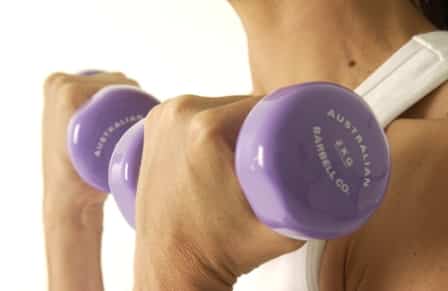November Newsletter
The advantages of pre and post surgery physiotherapy
By Graceville Physiotherapist Joni Levine
Physiotherapists play a crucial role in rehabilitation following various surgeries. No surgery is successful without a comprehensive rehabilitation plan post-surgery, and physiotherapy is a vital part of post-surgical rehabilitation. Depending on the surgery, rehabilitation could be anywhere from a few weeks to a year. Common examples of patients we see post-surgery include, but are not limited to:
- ACL reconstruction
- Total knee replacement
- Total hip replacement
- Meniscectomy
- Rotator cuff repair
- Laminectomy
- Lobectomy
- Prostatectomy
- Hysterectomy
Physiotherapists also play a crucial role pre-surgery. Physiotherapists will prescribe exercises to ensure the affected region is in the best possible shape it can be pre-surgery. This helps improve the chances of a successful rehabilitation post-surgery, as well as reduced rehabilitation timeframes. Physiotherapists can also discuss several self-management strategies to make life easier for you both pre and post-surgery. This could involve using supports such as braces, crutches or slings. We can also plan out what your post-surgery rehabilitation may look like, which helps you prepare for what to expect post-surgery.
We work very closely with your treating surgeon and other healthcare practitioners to ensure best possible outcomes. There is plenty of evidence that shows the benefits of working as part of a team in patient rehabilitation. If you are having surgery soon or have recently had surgery, get in touch with us to discuss your physiotherapy rehabilitation needs.
References
Filbay, S. R., & Grindem, H. (2019). Evidence-based recommendations for the management of anterior cruciate ligament (ACL) rupture. Best practice & research. Clinical rheumatology, 33(1), 33–47. https://doi.org/10.1016/j.berh.2019.01.018. Momsen, A. M., Rasmussen, J. O., Nielsen, C. V., Iversen, M. D., & Lund, H. (2012). Multidisciplinary team care in rehabilitation: an overview of reviews. Journal of rehabilitation medicine, 44(11), 901–912. https://doi.org/10.2340/16501977-1040. Sattler, L., Hing, W., & Vertullo, C. (2020). Changes to rehabilitation after total knee replacement. Australian Journal for General Practitioners, 49, 587-591. Retrieved from https://www1.racgp.org.au/ajgp/2020/september/changes-to-rehabilitation-after-total-knee-replace. Colibazzi, V., Coladonato, A., Zanazzo, M., & Romanini, E. (2020). Evidence based rehabilitation after hip arthroplasty. Hip international : the journal of clinical and experimental research on hip pathology and therapy, 30(2_suppl), 20–29. https://doi.org/10.1177/1120700020971314. McGregor, A. H., Doré, C. J., Morris, T. P., Morris, S., & Jamrozik, K. (2011). ISSLS prize winner: Function After Spinal Treatment, Exercise, and Rehabilitation (FASTER): a factorial randomized trial to determine whether the functional outcome of spinal surgery can be improved. Spine, 36(21), 1711–1720. https://doi.org/10.1097/BRS.0b013e318214e3e6. Ahmad A. M. (2018). Essentials of Physiotherapy after Thoracic Surgery: What Physiotherapists Need to Know. A Narrative Review. The Korean journal of thoracic and cardiovascular surgery, 51(5), 293–307. https://doi.org/10.5090/kjtcs.2018.51.5.293. Santos, N. A., Saintrain, M. V., Regadas, R. P., da Silveira, R. A., & de Menezes, F. J. (2017). Assessment of Physical Therapy Strategies for Recovery of Urinary Continence after Prostatectomy. Asian Pacific journal of cancer prevention : APJCP, 18(1), 81–86. https://doi.org/10.22034/APJCP.2017.18.1.81
Treating pain with heat & cold
Muscle strains and sprains usually benefit from a combination of both cold and heat after they have occur.
Whether you’ve pulled a calf muscle while running or a back muscle when doing the gardening or sprained your ankle playing basketball, it’s best to start off with cold therapy to ease inflammation (including swelling, redness or tenderness of the injury) and numb the pain.
Only after the inflammation resolves is it a good idea to switch to heat; this can help relieve any muscle stiffness at the injury site.
The general rule of thumb is … use cold therapy for acute injuries or pain relating to inflammation and swelling.
Use heat for muscle pain, aches and stiffness. Heat helps increase the blood flow by dilating the blood vessels, promoting muscle relaxation and tissue healing.
Myth … Moving will make my back pain worse
Keep moving! Exercise will boost the blood flow to your back and promote healing. Although your body may be telling you to just lie in bed all day, your back needs you to keep active.
The best thing you can do for your back is to go for a walk. It doesn’t need to be a long strenuous hike, but a light 20-30 minute walk will do both your body and mind a favour by keeping them happy.
Exercise has been shown to release endorphins, which stimulates that euphoric feeling. Endorphins act as both a painkiller and as the pay-off for your body’s reward system. So keeping active will help to ease your back pain.
TWO-THIRDS OF AUSTRALIANS AGED OVER 50 HAVE OSTEOPOROSIS OR OSTEOPENIA
The main health risk from osteoporosis is bone fracture, which could lead to persistent muscle and joint pain, postural changes, increased risk of falling, and breathing problems.
HOW PHYSIO CAN HELP:
Prevention: Guide you in a bone health plan and discuss the risk factors of poor bone health.
Management stratagies: exercise programs, balance training to minimise the risk of falls, education about bone health, and assisting in rehabilitation after a fracture is sustained.

Building Better Bones
Thursdays at 10am with our Physio Matt
Our progam is designed to build strength, increase bone density and improve your posture. Whether you have had a diagnosis of osteoporosis, osteopenia or you are just concerned about your bone strength as you age, our BONE LOADING CLASS could be for you. Health Fund rebatable. $45 per class.
